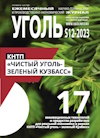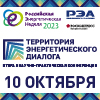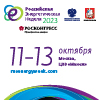
COAL PREPARATION
Original Paper
UDC 662.613.11:662.613.136© O.E. Astafyeva, 2024
ISSN 0041-5790 (Print) • ISSN 2412-8333 (Online) • Ugol’ – Russian Coal Journal, 2024, № 2, pp. 85-88
DOI: http://dx.doi.org/10.18796/0041-5790-2024-2-85-88
Title
APPLICATION OF ASH AND SLAG WASTE IN THE BUILDING MATERIALS INDUSTRY
Authors
AstafyevaO.E.1
1State University of Management, Moscow, 109542, Russian Federation
Authors Information
Astafyeva O.E., PhD (Economic), Head of Department Economics and Management in Civil Construction, e-mail: oe_astafyeva@guu.ru.
Abstract
The article presents the results of a study of the prospects for the use of ash and slag waste generated during the combustion of coal at thermal power plants in the production of concrete. It has been established that the inclusion of ash in the concrete mixture leads to a reduction in the cost of produced building materials, saving natural resources, and increasing the strength and frost resistance of structures. The use of ash and slag waste in the mixture, taking into account the calcium oxide (CaO) content, made it possible to classify the resulting mixture for the production of heavy and light concrete. When determining the composition of the mixture, the necessary characteristics were the strength of the resulting product, frost resistance, and resistance to cracking under the influence of external loads, such as compression, tension, and cooling. An analysis of the work of Russian and foreign scientists on the production of heavy and lightweight concrete using an ash and slag mixture formed during the combustion of coal was carried out. The chemical composition of fly ash is presented, which made it possible to determine the ratio of this filler in the concrete mixture.
Keywords
Coal combustion, Ash and slag waste, Thermal power plants, Thermal efficiency, High-calcium ash, Fly ash, Particle size distribution, Economic turnover, Resource saving.
References
1. Abdyusheva D.R. & Stepanov A.A. Characteristics of transportation organization in transport and logistics complex and its dynamics. Upravlenie, 2020. Vol. 7, (4), pp. 24-31. (In Russ.).
2. Kostoglodov D.D. & Kharisova L.M. Distribution logistics. Rostov-on-Don, Ekspertnoe Buro Publ., 1997, 128 p. (In Russ.).
3. Astafieva O.E. Specific features in formation of sustainable industrial development mechanism based on efficient use of natural resources. Vestnik universiteta (Gosudarstvennyj universitet upravleniya), 2020. (7), pp. 45-50. (In Russ.).
4. Global value chains in a changing world. Edited by Deborah K. Elms and Patrick Low. Fung Global Institute (FGI), Nanyang Technological University (NTU), and World Trade Organization (WTO), 2013. Available at: https:// www.wto.org/english/res_e/booksp_e/aid4tradeglobalvalue13_e.pdf (accessed 15.01.2024).
5. Gubanov D.A. Coal production and supply in the Russian Federation. Information and analysis review (June, 2020), Moscow, Central Control Administration of the Fuel and Energy Complex, 2020, 29 p. (In Russ.).
6. Katysheva E.G. Sector-specific features in formation of corporate financial resources in companies of the mining industry. Novyj vzglyad.Mezhdunarodnyj nauchnyj vestnik, 2014, (4), pp. 172-185. (In Russ.).
7. Grinko N.K. Prospects of coal mining and use. Ugol’, 2000, (11), pp. 7-12. (In Russ.).
8. Kiselev Yu.M. Stability of production and economic system of an economic entity in real economy. Novosibirsk, IEIE of SB RAS Publ., 2006, 44 p. (In Russ.).
9. Li D.-Y., Liu W.-C. & Wang S. Formation mechanism of coal mine sustainable capacity design. Journal of the China Coal Society, 2017.
10. Tarazanov I.G. & Gubanov D.A. Russia’s coal industry performance for January – June, 2020. Ugol’, 2020, (9), pp. 35-47. (In Russ.). DOI: 10.18796/0041-5790-2020-9-35-47.
11. Shemyakina T.Yu., Astafyeva O.E., Gorbunov A.A., Genkin E.V. & Balakhanova D.K. Opportunities for sustainable coal industry development through a riskbased approach to management. Ugol’, 2020, No. 5, pp. 29-32. (In Russ.). DOI: 10.18796/0041-5790-2020-5-29-32.
12. Rebeka Kovacic Lukman, Peter Glavic, Angela Carpenter & Peter Virtic. Sustainable consumption and production – Research, experience, and development – The Europe we want. Journal of Cleaner Production, 2016, (138), pp. 139-147.
13. Park Y-S., Lek S., Baehr C. & Jorgensen S-E. Advanced Modelling Techniques Studying Global Changes in Environmental Sciences. Developments in Environmental Modelling, 2015, (27), 1-std. 380 p.
14. Paving the Way to Sustainable Consumption and Production. Commissionon Sustainable Development Eighteenth session. Available at: https://sustainabledevelopment.un.org/content/documents/462csd18_2010_bp4.pdf UNEP. 2010(accessed 15.01.2024).
For citation
AstafyevaO.E. Application of ash and slag waste in the building materials industry. Ugol’, 2024, (2), pp. 85-88. (In Russ.). DOI: 10.18796/0041-5790-2024-2-85-88.
Paper info
Received January 9, 2024
Reviewed January 15, 2024
Accepted January 26, 2024









